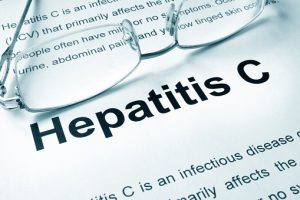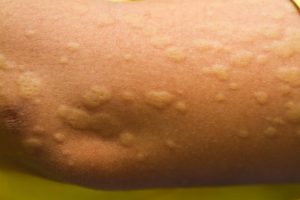 Hepatitis C (HCV) is a disease that infects and causes damage to the liver. It is caused by the hepatitis C virus and is spread from person to person through contact with blood. Over time, this disease can lead to cirrhosis, liver cancer and ultimately, liver failure.
Hepatitis C (HCV) is a disease that infects and causes damage to the liver. It is caused by the hepatitis C virus and is spread from person to person through contact with blood. Over time, this disease can lead to cirrhosis, liver cancer and ultimately, liver failure.
Although hepatitis C is the most common reason for liver transplants in the United States, many people do not know they have the disease until they are donating blood or are diagnosed with liver damage. The symptoms of HCV can take years to present and may include:
- Joint pain
- Sore muscles
- Dark urine
- Stomach pain
- Yellowing of the eyes (jaundice) and skin
- Fatigue
- Loss of appetite
- Fever
- Clay-colored bowel movements
Learning the risk factors of hepatitis C and receiving treatment promptly can reduce the severity of symptoms. Talk to your doctor about getting tested if the following pertains to you:
- You were born between 1945 and 1965
- You are infected with HIV
- You received a blood transfusion or organ transplant before July, 1992
- You are having or have had unprotected sex with multiple partners
- You are a current or former drug injection user and have shared needles
- You work in an environment where you are exposed to blood through a needle stick
- You have liver disease or have received abnormal liver test results
- You were treated for a blood clotting problem before 1987
- Your mother had hepatitis C when she gave birth to you
If diagnosed with hepatitis C, consider seeing a specialist who is trained and experienced in treating patients with your condition. There are several therapies and medications that your doctor may recommend. A complete list of approved medications and treatments for HCV can be found on the U.S. Food and Drug Administration’s website.
In addition to treatment, your doctor will also advise that you live a healthy life by maintaining
a balanced diet, exercising regularly, reducing or eliminating alcohol consumption, quitting recreational drug use, practicing safe sex and getting regular checkups.
All content of this newsletter is intended for general information purposes only and is not intended or implied to be a substitute for professional medical advice, diagnosis or treatment. Please consult a medical professional before adopting any of the suggestions on this page. You must never disregard professional medical advice or delay seeking medical treatment based upon any content of this newsletter. PROMPTLY CONSULT YOUR PHYSICIAN OR CALL 911 IF YOU BELIEVE YOU HAVE A MEDICAL EMERGENCY.





